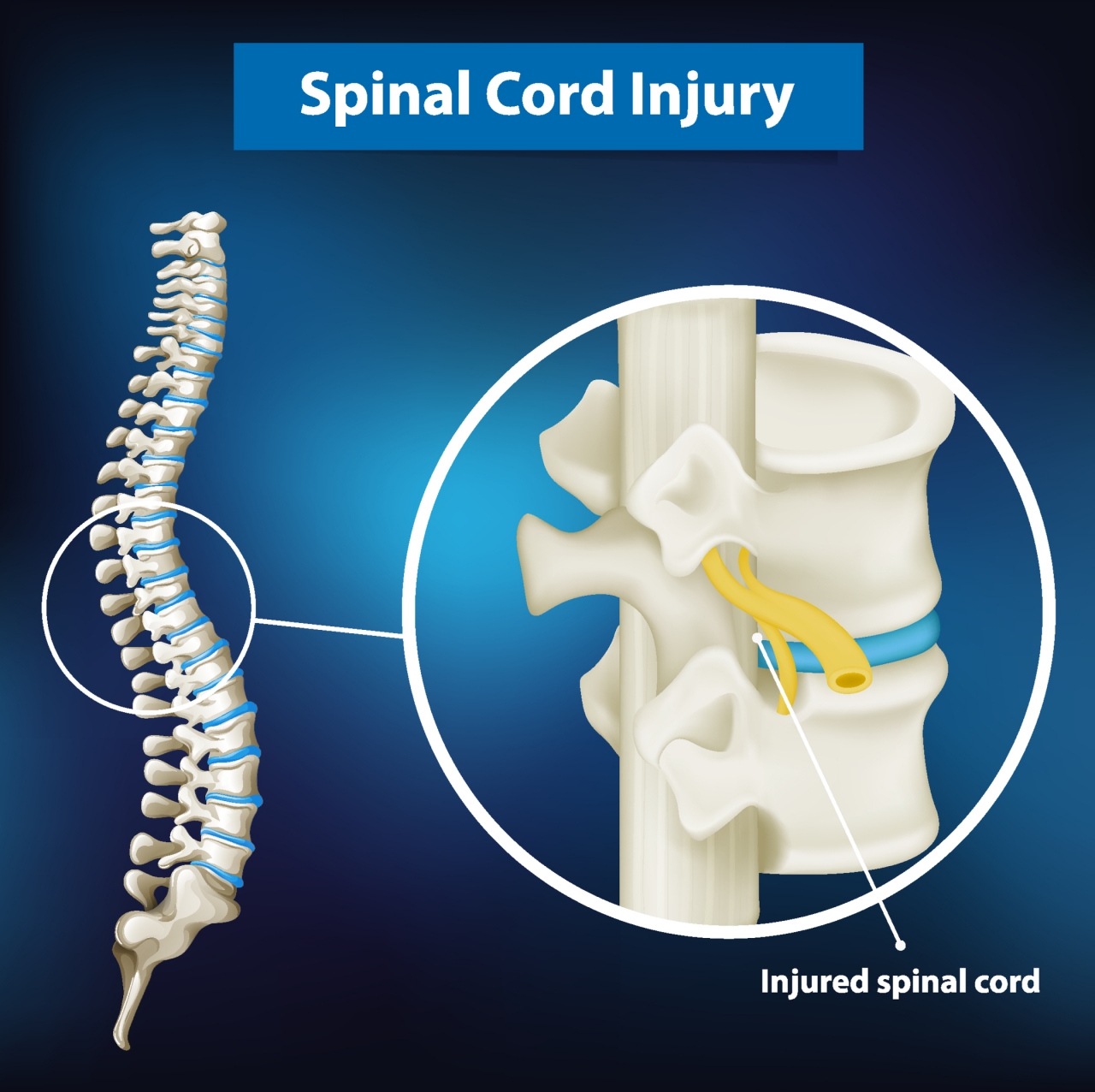National Spinal Injuries Centre Implements Innovative Technology of Lateral Tilt Pressure Care Mattress | Oska
- Updated on: 2022-06-12
- Read original article here

Opened in the 1940s, the National Spinal Injuries Centre based at Stoke Mandeville Hospital, boasts an inspiring team who undertake pioneering work in spinal cord injuries. Highly revered across the globe, their specialist care and rehabilitation programme has meant they were first in the UK to receive international accreditation. As well as adult Wards, the Centre now has a dedicated children’s and adolescence Ward; all patients can receive lifelong care and follow-up from the Centre for their spinal cord injury.
Patients will find themselves referred to the Centre via another hospital or Accident and Emergency, following a spinal cord injury or damage from trauma. The spinal cord has ascending sensory and descending motor pathways, enabling a two-way passage for communications between the brain and body (Rossignol, 2013). When these pathways are disrupted as a result of trauma, patients are left with loss in movement, sensation and autonomic control below the level of cord damage.
The trauma that patients with spinal injuries are exposed to is vast. Not only is their physical health severely affected, but there are also detrimental effects on emotional health and wellbeing such as shock, grief, disbelief and anxiety. The Spinal Injuries Centre supports patients with both physical and emotional needs, giving lifelong follow up care to all their patients.
The Spinal Injuries Centre has Wards ranging from acute admissions, re-admission and rehabilitation. They also have 15 beds dedicated to treating pressure injuries where patients are admitted specifically to have their pressure ulcers treated. Unfortunately, there is a waiting list for these specialist pressure care beds.
For patients with spinal cord injuries, their risk of acquiring a pressure ulcer is significantly increased due to the longevity of their disability. Approximately 80% of these patients will develop a pressure ulcer (Gupta et al, 2012) due to the risks associated with decreased mobility, changes in the sensations of their skin, issues with incontinence and spasticity (Sezer, et al 2015). Pressure ulcers can cause serious implications for patients, affecting both their physical and emotional health and dramatically decreasing their quality of life (Kroll et al, 2017). Often these patients no longer have the ability to reposition themselves, but repositioning must be a priority in order to prevent the patient’s pressure ulcers from breaking down due to tissue hypoxia caused by increased pressure (Stinson et al, 2013).
This is where OSKA® has been invited to advise the Spinal Injuries Centre due to its specialist pressure care products, such as the OSKA Series5 lateral tilt pressure care mattress. Delivering an alternating air and foam combination, the Series5 provides exceptional comfort and support, whilst also aiding in the prevention and treatment of pressure ulcers up to and including Category 4.
Because pressure ulcers predominantly occur on bony prominences like the sacral area, heels, elbows, and shoulders, the National Institute for Health and Care Excellence (NICE) guidelines 2014 recommend best practice is to tilt the patient off these bony areas to relieve pressure 2, 4 or 6 hourly, depending on the outcome of a patient’s risk assessment. The OSKA Series5 mattress provides automatic repositioning, meaning the mattress can be switched from alternating therapy to lateral rotation therapy, which gently tilts the patient from side to side every 10 minutes, 5 minutes on either side to alternate the pressure.
This innovative lateral tilt mattress provides an enhanced support surface for comfort and some vascular perfusion. When used in conjunction with physical repositioning and turning of patients, it offers a specialist aid for the prevention and management of pressure damage. For those we suspect may rapidly decline, or where repositioning is impossible due to a physical condition, such as a spinal injury patient where movement and physically turning a patient can often be troublesome for both patient and nurse, it is an excellent option. The combination of ‘tilt and turn’ therapy delivers excellent clinical outcomes.
Additionally, the OSKA Series5 mattress cover features an anti-shear system of three horizontal slide sheets attached internally. This protects the patient against shearing and friction when being handled or moved, which is especially important for paralysed patients who may not have feeling or movement in their feet. It also has the added benefit of a heel relief slope to offload heel pressure. Heels are one of the most vulnerable and susceptible areas of the body to shear and pressure damage, which could cause further distress to the patient.
The Series5 also offers an innovative ‘patient safety edge’ far exceeding the industry standard and expectation. Employing the science behind safety, this superior perimeter safety feature significantly reduces risk around patient falls and side rail entrapment. The reinforced wall of foam around the outside the of mattress ensures patients lying down are directed towards the mattress centre, away from the edge and side rail hazards.
Patients able to seat themselves on the mattress edge will have their weight redistributed into the centre of the mattress. If the patient was to lose balance and fall, the wall will help them fall back onto the mattress, rather than forwards. This provides a heightened sense of safety and security, especially for those with reduced mobility due to paralysis.
Hester Dunne, a Tissue Viability Clinical Nurse Specialist has worked at the unit for 32 years. She attended a wound conference in February 2020, where she met OSKA and was introduced to the OSKA Series5. Excited about the benefits of using this mattress with her spinal injury patients, but greatly delayed by COVID, Hester finally began a trial of the Series5 in June 2021.
Hester trialled the OSKA Series5 on 4 patients, two ladies and two gentlemen, with time spent on the mattress ranging anywhere from 4 days to four weeks. Three of the patients were tetraplegic meaning all four limbs are paralysed and one was paraplegic, meaning both legs were paralysed but there was some movement in the arms.
One of Hester’s patients with a recent spinal cord injury trialled the mattress for four weeks and found it more comfortable than the previous hybrid mattress. She found the lateral tilt at night was excellent, requesting to be sent home with this mattress.
Another patient who used the Series5 found that on their previous mattress there had been marking to the skin, but once they had been moved to the Series5 the marking to the skin was eradicated.
A gentleman with a long-standing spinal injury and post-surgical, was no longer able to turn himself in bed. The Series5 was a real success as this gentleman was able to return to his family with this mattress due to the lateral tilt function – a key driver and need in order to facilitate his return home.
The outcome of the Trial was extremely positive, resulting in two of the four patients wanting to have the Series5 mattress at home when discharged. One patient was able to return home with a Series5. Additionally, the nursing team found the mattress straightforward to use, with a quiet pump, easy to clean, and really favoured the lateral tilt function of the mattress.
Hester says, “As part of the pressure ulcer prevention plan, the Series5 lateral tilt mattress has enabled these patients with a spinal cord injury to return home to their families.”
“In conclusion, the OSKA Series5 trial at the Spinal Injuries Centre has been extremely positive with the Series5 offering huge potential in protecting and maintaining our patients’ vulnerable pressure areas. We know that for patients with spinal injuries their risk of pressure damage is greatly increased and the impact on these patients can be hugely detrimental to both their physical and emotional wellbeing. The OSKA Series5 lateral tilt really does have the potential to change patients’ lives with this highly innovative technology.”
Gupta N et al (2012) Comparing and contrasting knowledge of pressure ulcer assessment, prevention and management in people with spinal cord injury among nursing staff working in two metropolitan spinal units and rehabilitation medicine training specialists in a three-way comparison. Spinal Cord; 50: 2, 159-164.
Kroll,T et al; (2007) Involving people with spinal cord injuries in the education of rehabilitation professionals. International Journal of Therapy and Rehabilitation; 14: 7, 299-304.
Marin J et al (2013) A systematic review of risk factors for the development and recurrence of pressure ulcers in people with spinal cord injuries. Spinal Cord; 51: 7, 522-527.
National Institute for Health and Care Excellence (NICE)(2015) Quality Standard QS89, Pressure Ulcers, Available at: Quality statement 6: Help with repositioning | Pressure ulcers | Quality standards | NICE (Accessed 16 August 2021).
Rossignol,S. (2013) Anatomy and physiology of the spinal cord. In: Fehlings MG et al (eds) Essentials of Spinal Cord Injury; Basic research to Clinical Practice. New York: Thieme.
Sezer N et al (2015) Chronic complications of Spinal Cord Injury. World Journal of Orthopedics; 6: 1, 24-33
S. Sprigle and S. Sonenblum, “Assessing evidence supporting redistribution of pressure for pressure ulcer prevention: a review,” Journal of Rehabilitation Research and Development, vol. 48, no. 3, pp. 203–214, 2011.
Stinson M et al (2013) Spinal Cord Injury and Pressure Ulcer Prevention: using functional activity in pressure relief.





